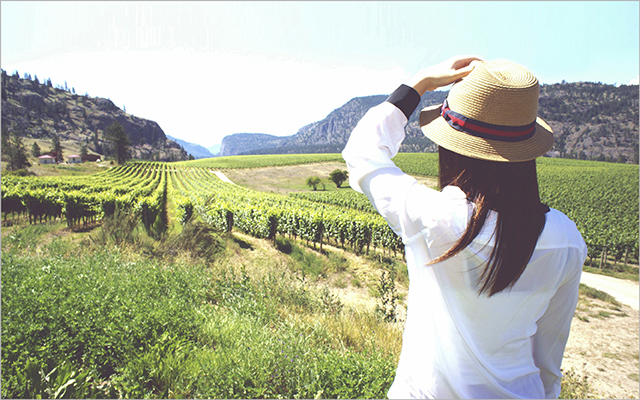It’s late afternoon and the sun is setting behind the towering, rust-colored Navajo sandstone mesas, taking its warmth with it. I remove my oar from the water and watch droplets dapple my raft. On the horizon, clouds shaped like feathers and wild horses float and gallop across the sky.
Rio Colorado — the “red river,” so named for its normally ruddy appearance — is unusually clear today. Extreme drought has kept the rich crimson sediments from washing into the water, explains my guide, Morgan Lavery. “I’ve never seen it like this,” he says.
The headwaters of the 1,450-mile-long “mighty” Colorado at La Poudre Pass in the Southern Rockies may be humble, but the river — along with its 25 major tributaries — is the lifeblood of the southwestern United States.
Its wetlands provide critical habitat for migrating birds, bighorn sheep, bears, and even mountain lions. Dams, such as Hoover on the Nevada–Arizona border and Glen Canyon in Arizona, have changed the river’s natural course and dramatically affected its fragile ecosystem; the river supplies water to some 35 million people in seven states and Mexico. Millions more, like me, flood the basin annually to enjoy its natural beauty and recreational opportunities.
A Journey Through Time
Tourists from all over the world visit the rugged terrain near Moab, Utah, to travel back through geologic time. Visitors to nearby Arches National Park can wander among 65-million-year-old rock formations — arches, pinnacles, and fins carved from sandstone once buried thousands of feet below a dry seabed that stretched to the horizon and beyond.
Thrill seekers traverse Canyonlands National Park’s slot canyons and scramble up crumbling sandstone trails to gawk at stunning vistas of the Colorado Plateau and La Sal Mountains or capture astonishing sunsets and moonrises.
Mountain bikers roll into town to tackle an extensive network of backcountry paths — including the famous Slickrock Trail — while road bikers grind it out along the canyon rims, especially during the annual Skinny Tire Festival.
I’ve made pilgrimages here for biking, backpacking, and hiking adventures for more than a decade. This time I arrive with my best pal, T. C. Morgan-LaRosa, to undertake two entirely new adventures: canyoneering and packrafting.
Dynamic Duo
This type of combo adventure is becoming increasingly popular among outdoor enthusiasts thanks to the portability of small, inflatable packrafts. Anyone looking to add water exploration to a wilderness getaway can easily slip a packraft into a backpack or strap it on a bike — it takes up about as much space as a sleeping bag. Packrafts’ simplicity and durability make them perfect for exploring rivers, lakes, fjords, and even glaciers.
This simple watercraft traces its roots back to Native Americans living in the northern reaches of North America, but the current models evolved in Alaska over the past 30 years. Living in a state with few roads and many rivers, Alaskans realized the need for a convenient option for navigating waterways.
“They’re extraordinarily user-friendly,” explains Brad Meiklejohn, president of the American Packrafting Association. “They’re more stable than canoes or kayaks, making them easy for beginners and kids, and they’re comfortable. Many people with bad backs have reported switching to them.”
Based on the membership growth of Meiklejohn’s organization — up to 2,000 members from 35 countries worldwide since 2012 — as well as an increasing number of packraft manufacturers entering the marketplace, it’s clear that packraft usage is rising.
Excited to run the river and descend into canyons, we arrive at the office of Desert Highlights, a canyoneering guide service in Moab, early in the morning. Lavery and another guide, Herb Crimp, greet us with warm smiles and all the gear for a full day of adventuring.
We stuff our packs with snacks, lunch, and assorted ropes, helmets, harnesses, and carabiners for our land-based explorations. Meanwhile, Lavery and Crimp fill a second set of waterproof bags with wetsuits and booties, collapsible paddles, packrafts, and life vests for the aquatic segment of the day.
Hoisting our gear and ourselves into a beat-up van, we set out for the trailhead. As we bump along unmarked roads, I imagine T. C. and myself as modern-day versions of 19th-century adventurers Isabella Bird and Nellie Bly, ready to take on anything that awaits us.
Don’t Bust the Crust
While the sun nudges its way above the cliffs overlooking Moab, we step onto a path at the upper end of the popular Grandstaff Canyon. Lines of petrified sand dunes stretch out in all directions.
At first glance, a desert landscape appears devoid of life, but look closely and you’ll notice delicate ecosystems amid rugged terrain. I spy a snake slithering through stands of slow-growing pinyon, a type of pine tree that produces a favorite snack of mine (and of the pinyon jays): pine nuts.
Stopping to point out colonies of cryptogamic soils, Lavery reminds us to stay on the trail. The vegetation — a mix of lichens, algae, mosses, and fungi — plays a vital role in desert ecology, binding soil together, inhibiting wind erosion, and providing nutrients for plants. One stray footprint can destroy years of growth.
Distinctive Utah junipers — with their bushy crowns and many-forked trunks — splash the ruby-encrusted sands with evergreen. In order to survive, their roots split rocks in search of water and nutrients. Once established, these small trees are tenacious enough to withstand the harsh elements for up to 650 years.
No Easy Way Down
Like the roots of the juniper, we have to travel through rock to find our way to the stream on the lower side of the canyon. Our only route is through a deep, vertical shaft called the Medieval Chamber.
While Lavery sets up the rope lines and thoroughly explains the ins and outs of proper rappelling technique, T. C. and I don our harnesses and helmets as the late-morning sunshine warms our faces.
The first to take the plunge, I ease myself into the darkness. Once my eyes adjust, I notice a small pool of water on the sandy floor below. “Follow the rope to the left,” Lavery shouts from above. “And, remember, if anything happens, I got you!”
Once we are all safely on the ground, we follow the light squeezing through The Keyhole — a narrow passageway at the bottom of the Chamber that provides an exit from its dark confines — and find our way to the top of Morning Glory Arch, a 100-foot-high sandstone bridge that spans 243 feet between rock formations.
There are no rope anchors on the arch, so you need a partner to counterbalance your weight as you rappel down. Descending on opposite sides of the arch at the exact same speed would be a true test of the trust and friendship T. C. I have built over many years.
Thoughts of plummeting to my death briefly enter my mind. But knowing my life — and that of my friend’s — quite literally hangs in the balance, I take several deep breaths to bring myself back into the present. Being suspended within this beautiful scene is a bit unnerving, but I also feel a deep joy while spinning slowly to the ground. Working together to make sure we both land safely is something we’ve done for each other for a very long time.
Testing the Water
Many adventures end at the edge of the desert trailhead, but thanks to our packrafts, ours is about to head into new frontiers.
After a hard-earned lunch of veggie wraps on the riverbank, during which our guides offered some paddling safety tips, we squeeze into our wetsuits. Once fully encased in these eel-like exteriors, we buckle on life vests and jackets, inflate our boats, and head to the public access — areas along the waterways that have room for parking trucks and trailers. Unlike the hefty rubber rafts typically used for navigating rivers, packrafts weigh only about 5 pounds, making them perfect for portaging — and they turn any area near a body of water into an access point.
Almost.
“I’d use a packraft anywhere,” says Meiklejohn. “Except for exploring hippo-, gator-, or shark-infested waters.”
Our planned route is gator-free, but it isn’t without its challenges.
Lavery knows we are slightly above-beginner river oarswomen, but he doesn’t want our first packraft experience to be a washout, so he has us launch our boats near a calmer section where we can practice piloting into currents before facing the forthcoming rapids.
A fundamental rule of river rafting is that sometimes you have to paddle upstream. It can help you avoid obstacles — such as rocks and stumps — that might obstruct your path downstream.
We learn to paddle into and peel out of eddies, the circular movements of water that run counter to the main current. Catching an eddy provides an opportunity to rest or scout your next move before reentering the current under control.
Cutting the right angle — in this case, a 45-degree path relative to the downstream current or the current within the eddy — is an essential move to master. There’s also an art to stroke speed: You want to keep it strong, but not too strong, and sometimes the best decision is to not paddle at all.
It turns out that successful packrafting has a lot in common with successful living. They both involve setting intentions, finding balance, keeping a good pace, and embracing the fact that sometimes you’ll have to backtrack before reaching your destination. It’s in those unexpected moments that the biggest lessons and most memorable experiences often occur.
Canyon landscape image: Heidi Wachter
Rapelling arch image: Roy Willman
Packrafting image: Moab Action Shots
This appeared as “A River Runs Through It” in the June 2017 print issue of Experience Life.




This Post Has 0 Comments